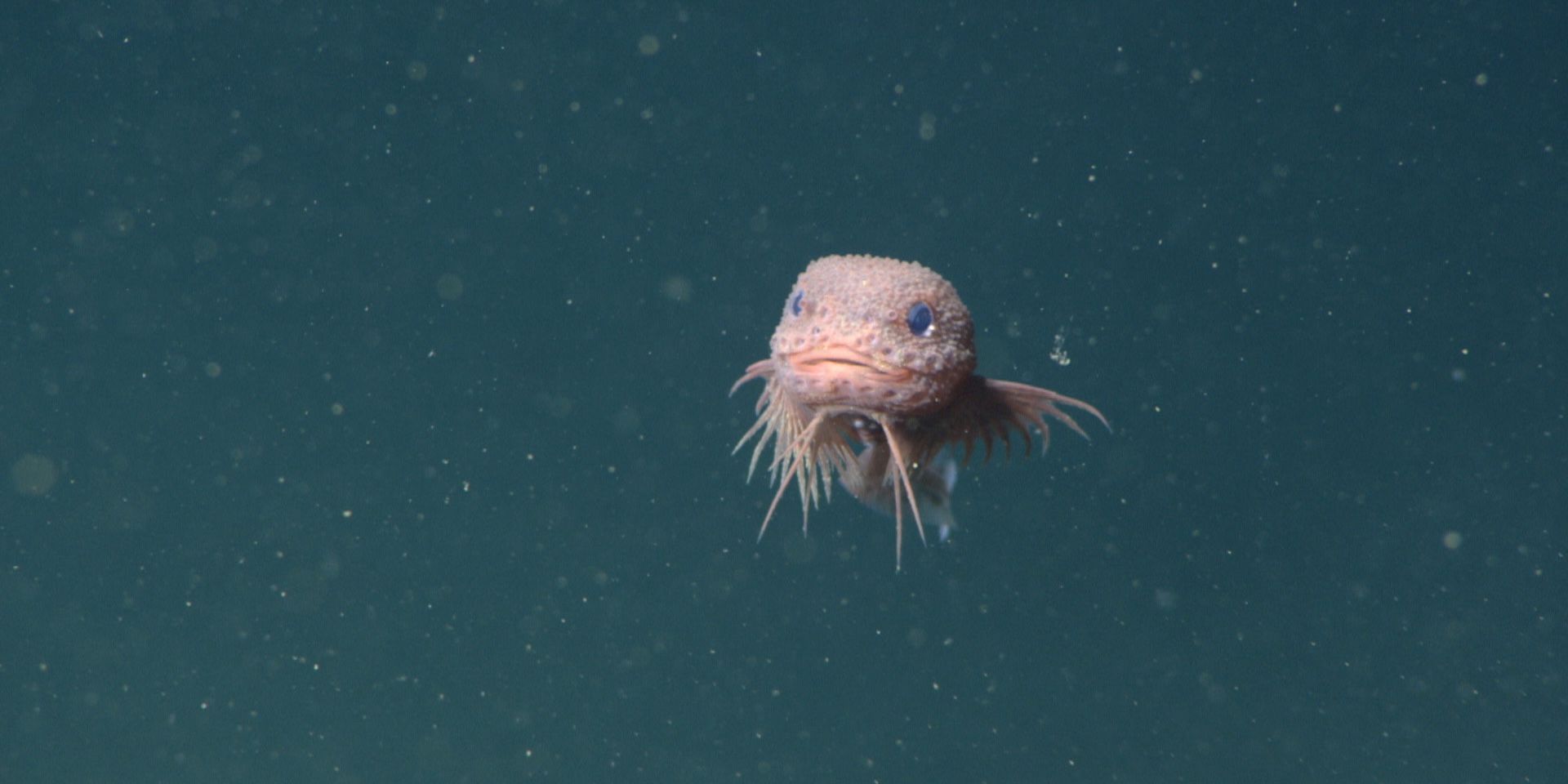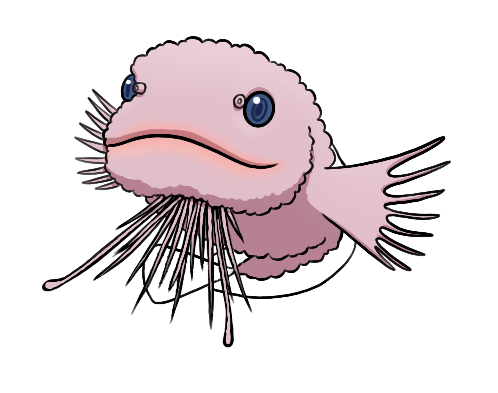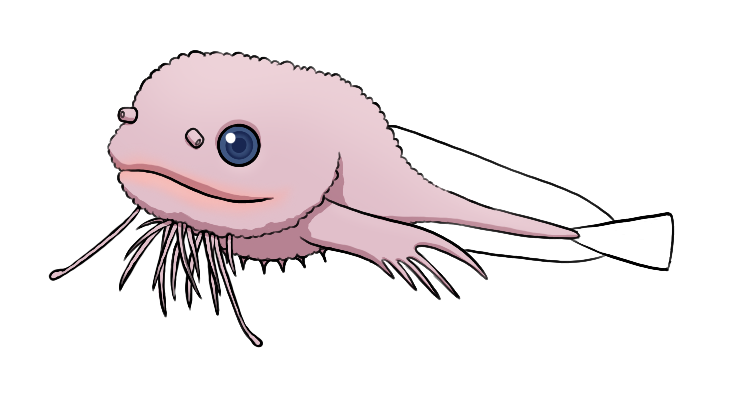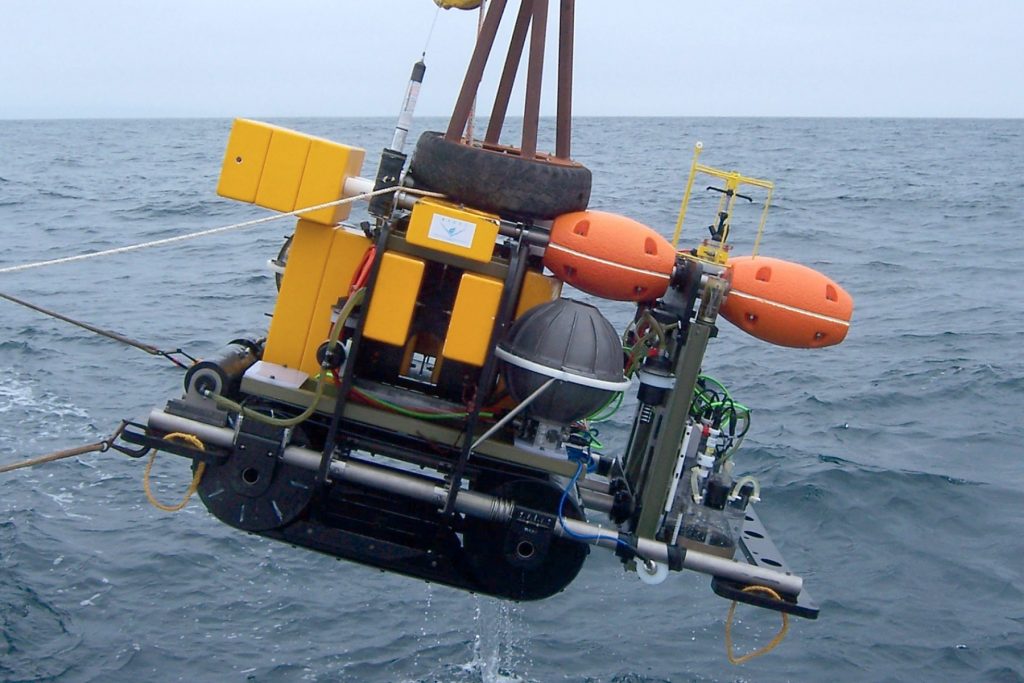Unlikely Internet Sensation: Bumpy Snail Fish

The Bumpy Snail Fish, Careproctus Colliculi, 2019. (Monterey Bay Aquarium Research Institute).
On Sept. 8, 2025, the internet was taken by storm with a recently discovered deep-sea snailfish known as the bumpy snailfish.
The bumpy snailfish (Careproctus colliculi) is a pink deep-sea snailfish with a rounded head, large eyes, fan-like pectoral fins, and of course, a distinctive bumpy texture.
Many people on the internet have taken to pointing out how the little fish appears to smile, has “chin hairs,” and an endearingly wobbly swim pattern.
I had the pleasure of speaking with the scientist who described the bumpy snailfish, Dr. Mackenzie Gerringer from SUNY Geneseo, who specializes in deep-sea fishes.
Gerringer is a marine biologist and an associate professor of biology with research interests in deep-sea biology, physiology, and ecology of fishes, and the hadal zone. The hadal zone is named after the Greek god, Hades, and refers to the ocean’s deepest zone, located in troughs about 6,000 to 11,000 meters (3.7 to 6.8 miles) deep.
Gerringer is best known for her research on her favorite deep-sea fish, snailfish.
“They are incredible, with so many amazing adaptations,” Gerringer said.
The bumpy snailfish was first discovered in 2019. Snailfishes are part of the family called Liparidae and hold over 400 different species.
A unique and intriguing adaptation of snailfish is a disc found on their underside. They use this feature to anchor to the seafloor or to attach themselves to other traveling animals.
These remarkable adaptations enable snailfish to withstand the harsh conditions of the deep sea.
“I find it extremely beautiful that an animal who appears so delicate lives in an environment that seems so harsh to us,” Gerringer observed.
“We had the privilege of discovering, describing, and naming another amazing deep-sea snailfish that is among the deepest-living vertebrates,” Gerringer shared, “The Mariana snailfish (Pseudoliparis swirei) lives in the Mariana Trench (located in the hadal zone) down to depths greater than 26,000 feet.” This discovery was among the highlights of her career.
The bumpy snailfish was discovered by a team of researchers from the Monterey Bay Aquarium Research Institute (MBARI) off the coast of California, in the abyssal zone roughly 10,722 feet below the surface. This region lies just above the hadal zone, where the Mariana snailfish was discovered. Researchers Gustav Paulay and Steve Haddock encountered the fish using a remotely operated submersible vehicle named Doc Ricketts. The specimen they observed was a female measuring approximately 3.6 inches in length.
Gerringer said, “Discovering a new species happens both all at once and as a slow unfolding of information.”
Upon discovery of the fish, the MBARI researchers identified it as a snailfish and had the specimen sent over to Gerringer Lab due to her and her team’s experience with deep-sea snailfishes.
“In the lab, I and my collaborators made careful measurements, counted features on the fish, and scoured the published literature to see if this animal could match any known species,” Gerringer recalled. “As we gathered more evidence, including DNA sequences, it became clear that this was a new species, not previously known to science. A lot of the process of describing a new species is seeing if it’s possible to disprove that the organism you’re looking at is a new species. Only when we’re completely unable to match the animal to a known species can we name and describe them as new to science.”
Gerringer Lab, stationed at SUNY Geneseo, is an integral station for deep-sea research.
Gerringer and her team focus on answering three important questions when it comes to the deep sea.
First, they ask the question of biodiversity: which species live where in the deep sea and why? Second, they question how these species have adapted to their environment, asking how deep-sea conditions shape the physiology and biomechanics of deep-sea species? Third, and most importantly, they question human impact: how are deep-sea ecosystems connected to the rest of the oceans, and how do human activities influence Earth’s largest habitat?
Gerringer explained, “To effectively study the deep sea, we need to actively learn from other areas of marine biology; there are processes and principles that apply across marine habitats. Deep-sea ecosystems do bring unique challenges of access, meaning that the collaborations between biology and engineering are especially strong. It takes a lot of different types of expertise and large, collaborative teams to study deep-sea organisms.”
Gerringer continued, “Accessing the deep sea is certainly the biggest challenge to studying abyssal animals like the bumpy snailfish, but technological innovation and a lot of human persistence have made studies of these amazing animals possible.” Human technological advancement has made it easier to observe deep-sea creatures in their natural habitat, such as the remotely operated submersible that aided in discovering the bumpy snailfish.
While these deep-sea discoveries are enlightening and worth celebrating, it is important to stay aware of the impact humans have on these creatures and their habitat. Climate change is greatly affecting the deep sea.
“For the deep sea, one of the major concerns from climate change is oxygen loss,” Gerringer explained. “Warmer water holds less oxygen than colder water, so rising sea temperatures reduce oxygen availability. Further, the deep sea is ventilated by sinking water from the surface that sinks to the deep oceans when it is very cold and salty, increasing its density. As surface waters warm, that mixing becomes more difficult, reducing ventilation to the deep sea.”
Gerringer emphasized, “Although the deep oceans might feel far away or otherworldly, these habitats are closely connected to the rest of the oceans, and our actions matter for deep-sea species.”
The bumpy snailfish, as well as other deep-sea fishes, are incredibly delicate creatures to research. Human impact is a challenging factor that is making it harder to research the animals of our oceans. The Deep Ocean Stewardship Initiative is a great way to learn more about climate change, the deep sea, and what we can do to help preserve Earth’s largest habitat.
It is through these initiatives and scientific educators like Dr. Gerringer that the next generation of scientists and conservationists can be inspired and want to take action. Gerringer expressed, “I am very happy to be involved with a lot of amazing research and experiences, but I am most proud of the work I get to do supporting students in the classroom and in the lab.”
Gerringer continued, “One of the beautiful things about science is that it is a conversation between the past, the present, and the future. We learn from those that came before us, we read their work, we talk to one another about ideas, and we write down our findings and understanding for others to keep doing the same. The more people, the more perspectives, the more questions, the better the science. In teaching science and in working with the amazing students I get to work with in both the classroom and in the lab, I learn from their perspectives and their questions. We grow our understanding together, and they continue to enhance the science in their own work into the future. I think that this layering of ideas is lovely, and I’m happy to be a part of it.”
The scene of Gerringer and her dedicated students carefully handling and describing the bumpy snailfish beautifully illustrates how the future of science depends on the curiosity and involvement of today’s students.
Snailfishes are overlooked and underrepresented deep-sea fishes that often escape publication. Gerringer expressed excitement at the prospect of publishing new findings to help broaden public understanding of these fascinating creatures.
Gerringer stated, “To me, deep-sea snailfishes are an important reminder of how much we have to learn about our planet and how the beautiful ecosystems of the deep sea deserve our attention, curiosity, understanding, and protection.”
The enthusiastic embrace of the bumpy snailfish is an undeniable indicator that we are still learning something new every day about the Earth. This new fish, discovered by MBARI researchers and described by Gerringer, is the only bumpy snailfish species discovered—so far.
Hopefully, in the near future, we can learn more about the range of this adorable snailfish’s habitat and how deeply it ventures into the ocean. With all the hype surrounding the discovery of the bumpy snailfish, there’s hope that more people will tune into new scientific discoveries and be inspired to get involved in supporting ongoing research efforts.
For more information on bumpy snailfishes and the work of Gerringer Lab, go to wp.geneseo.edu/gerringerlab/.



